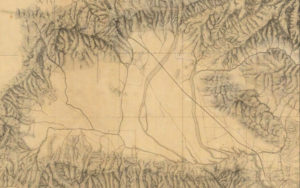The San Fernando Valley
Tom Petty sings about long days in Reseda and even Bing Crosby sang about making the San Fernando Valley his home.
Eccentric residents of Encino have owned llamas and chimps, and Frank Zappa and daughter Moon Unit sung about Valley Girls.
Here are a few things I bet you didn’t know about the Valley.
The San Fernando Valley
It’s part of Los Angeles Really
After the Northridge earthquake I was aggravated to hear newscasters say the San Fernando Valley was ‘near Los Angeles’. That’s like saying ‘Queens is near New York’ or ‘The French Quarter is near New Orleans’. I’d like to try, in my own feeble way to explain the Valley to the rest of you out there — especially those of you on the other side of The Hill.
Take a city and plop a mountain range down through the middle of it. It’s called ‘The Valley’ because it is separated from downtown LA and roughly the southern half of the city by the Santa Monica Mountains.
Tom Petty sings about long days in Reseda, eccentric residents of Encino have owned llamas and chimps, and Frank Zappa and daughter Moon Unit sung about Valley Girls. Yes, I’m a Valley Girl, but you’re not supposed to call me that because it’s an insult — like, gag me with a spoon, you know! The Valley has been looked down upon by the Westside, dismissed as a bedroom community by Downtown, maligned as a long series of strip malls by… -you know who you are. It has been said the Valley is to LA what Canada is to the United States. Or even, the Anti-Los Angeles.
The Real San Fernando Valley
We are none of these things, except sometimes, maybe a little. The Valley was annexed by the city of Los Angeles in 1917 and tried to secede in 1980. There are genteel church socials in Toluca Lake while porn is a growth industry in Chatsworth. Movie stars eat at kosher delis in Studio City or you can get the best tacos north of the border in Van Nuys. These areas – Northridge included – are all part of the San Fernando Valley and the San Fernando Valley, like it or not, is part of the city of Los Angeles. No kidding. Look for us up in the northeast corner of the map.
Native Americans and The Early Years
The Valley was inhabited by members of the Tongva Indians (renamed Fernandino and Gabrielino by the Spanish) since pre-history. It was an ancient Indian footpath that led Spanish explorer Gaspar de Portola through a mountain range and down into a peaceful valley covered with oak trees. Ignoring the enormous village of Indians who had already titled their city, he named the area Los Encinos (The Oaks). He promptly forgot about it (figures), because later the area was rediscovered and called the Lost City of Los Encinos. As if in penance, Signor Portola’s tortuous journey is memorialized daily by commuters trapped in traffic on the 405 Freeway.
In 1797, Mission San Fernando Rey de España was founded as a stopping point for weary travelers on El Camino Real (The King’s Road). This roadway is now called Ventura Boulevard and is the unofficial main drag of the Valley. It hugs the northern length of the Santa Monica mountains from the northwest corner in Woodland Hills, then southeast past Universal City until plunging into the Hollywood Pass where it changes names to the Cahuenga Pass. Ventura Blvd. is roughly paralleled by the Ventura Freeway which goes northeast into Ventura County.

A detail of the San Fernando Valley, from a manuscript map of Los Angeles and San Bernardino topography, 1880, by William Hammond Hall, Office of the State Engineer, California.
The map shows Rancho El Escorpión (center left, in the foothills), Rancho El Encino or Rancho Los Encinos (lower center), Mission San Fernando Rey de España (center top), and the Rancho Cahuenga inholding within Rancho Providencia (lower right).
The upper Los Angeles River and its tributaries are also shown.
I found this excellent website with more info on the origin of street names in the San Fernando Valley here: http://www.americassuburb.com/streets.html